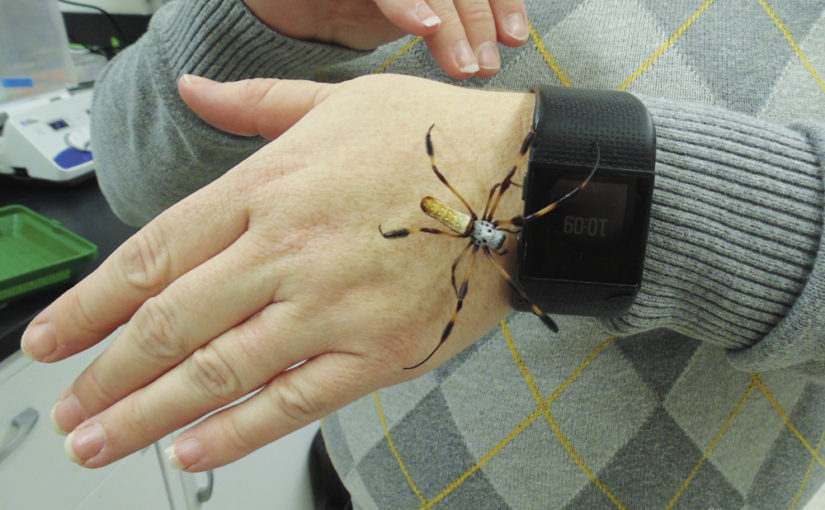Spider silk is now being considered as a means for advancement in medical applications.
Amanda Brooks, assistant professor of pharmaceutical science, is currently researching ways to use a certain type of spider silk to create extended release drugs for medical applications.
Spider silk is an interesting option because it’s strong, stretchy and spiders can produce a lot of it. For the purposes of Brooks’ laboratory, the spiders have the specific silk extracted from them every other day for about an hour.
The spiders used for these studies, golden silk orb-weaver spiders, have six types of silk they produce, but the researchers only use one. They use a microscope to ensure the extraction of the correct fibers, but the spiders are not hurt in this process.
When researchers use bacteria to make spider silk protein it comes out as a white powder. Then it’s turned into a liquid before turning it into a usable synthetic silk fiber.
Researchers look at the underlying biology of the fibers and use structure function relationships to create specific items they can use. They mix and match biological and mechanical functions to create what they see lacking in the medical community.
“Like Lego blocks, you can mix and match and make different patterns,” Brooks said. “So spiders have specific Lego blocks that give mechanical function while there are other blocks in nature that give biological function.”
The example Brooks used was heparin, a biomolecule that is found in the human body whose binding motif prevents blood clots and fights infection. Mixed with the super silk background, it can grab that heparin from the bloodstream to help prevent clotting and infection.
Because of spider silk’s numerous properties, stretchiness or elasticity, it’s perfect for a vast amount of applications.
One of the larger projects Brooks is working on is an application of the spider silk to combat antibiotic resistant bacteria. The way she sees it, the pharmaceutical companies aren’t prioritizing anything about antibiotic resistant bacteria, and the development of new and effective antibiotics is expensive and takes many years.
Brooks knows that she may not be able to push companies to work faster or to ask doctors to prescribe less, but she is aware that both of these things are improving. Instead, her idea is to use controlled release medication made with spider silk to target infection as opposed to releasing antibiotics into the body whether or not the person is in need of that specific antibiotic.
“Let’s say the physicians prescribe the antibiotics they want,” Brooks said, “But instead of that antibiotic immediately coming in contact, even if you don’t need it, let’s just sequester it for the time being … we took a little element and we mixed it into spider silk, and now we can create these little bubbles, and inside these little bubbles we package a bunch of antibiotics.”
The bubble is designed to only break open upon coming in contact with that specific infection, which means that it will only be released into the body in the event that it will have a positive impact on the persons health, Brooks explained.
Another idea Brooks hopes to one day be working toward is a similar application used with opioids. She wants to be able to tag where pain is coming from and have the opioids be released to that specific area with the hope of decreasing opioid dependency and abuse.
